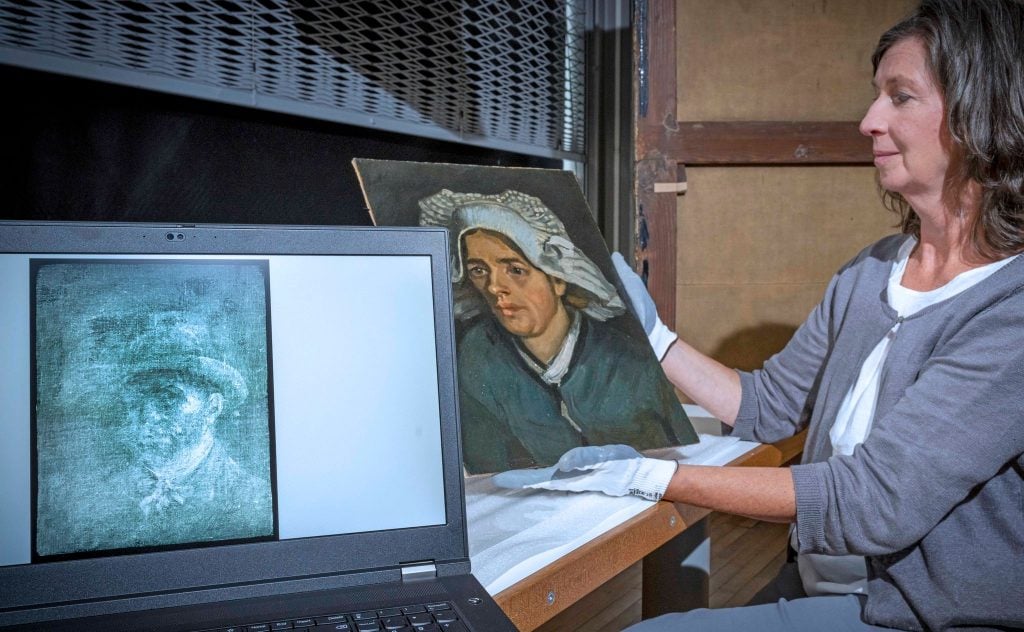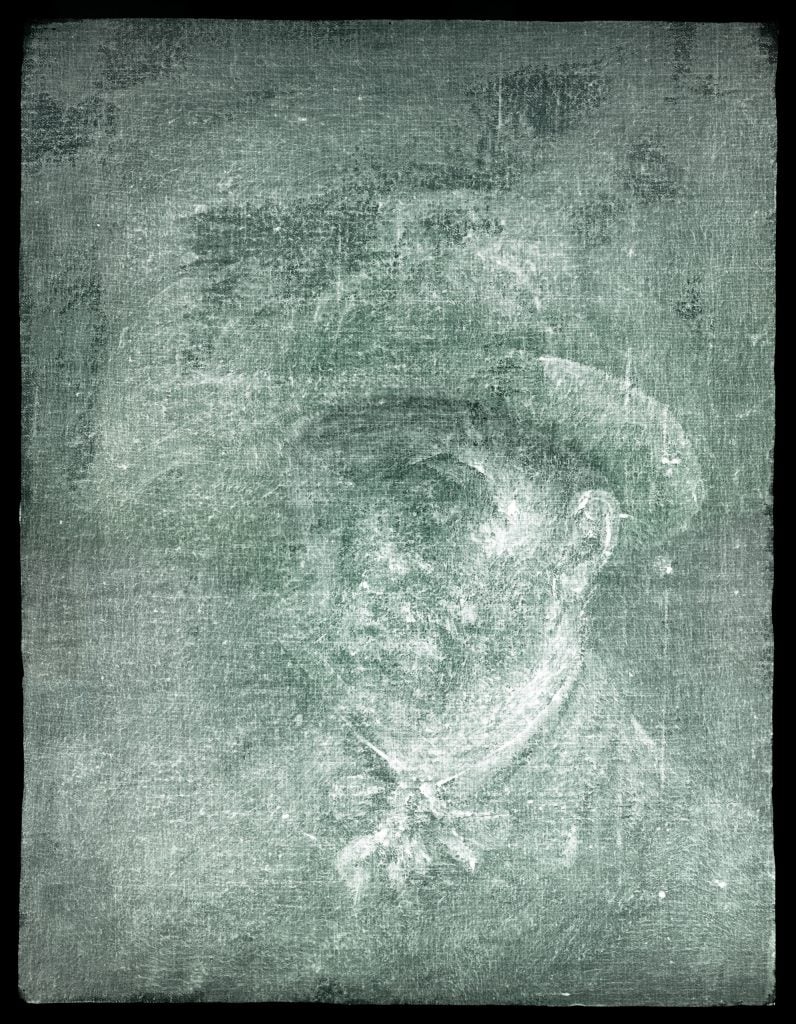Art History
An X-Ray Uncovered What May Be Van Gogh’s First-Ever Self-Portrait Beneath a Modest Painting of a Peasant Woman
Scholars will now to try carefully disentangle the images from one another.

Scholars will now to try carefully disentangle the images from one another.

Dorian Batycka

Conservators at the National Galleries of Scotland last week came upon a very notable find: a self-portrait of Vincent van Gogh underneath a modest painting of a peasant woman had made over a century ago.
Even more remarkably is the fact that the self-portrait may be the earliest Van Gogh ever painted.
The previously invisible picture was concealed by layers of glue and cardboard, likely hidden in part due to the thriftiness Van Gogh was forced to abide by due to a lifetime of financial hardship.
The self-portrait, discovered via an X-ray, depicts Van Gogh wearing a neckerchief along with a brimmed hat, and is notable for depicting the left ear he notoriously sliced off three years after the portrait of the peasant woman was painted in 1885.
That means the picture would be his first-known painting of himself because scholars have thus far only been aware of self-portraits from as early as 1886, the year he moved to Paris and discovered Impressionism.
The work appears to be part of a group of five other known self depictions held in the collection of the Van Gogh Museum in the Netherlands. Those works were all painted on the backs of canvases during his years in Nuenen, where he began his first studies in preparation for The Potato Eaters, painted in 1885.

Van Gogh self-portrait revealed by an X- ray of Head of a Peasant Woman (1885). Photo: Graeme Yule/National Galleries of Scotland.
The work was scanned as part of a cataloguing procedure in preparation for the Royal Scottish Academy’s summer exhibition of French Impressionism.
“We weren’t expecting much,” Lesley Stevenson, senior conservator at the National Galleries of Scotland who discovered the new work, told the Guardian.
Frances Fowle, senior curator of French art at the museum, called the discovery truly remarkable, especially since it yields new insights into how Van Gogh laid paint on canvas. Fowle believes it to be the only self-portrait of Van Gogh in a U.K. institution.
“This period when he began producing self-portraits was key in the development of his mature style, when he began experimenting with his own distinctive brush stroke,” he told the Guardian. “Van Gogh was a very independent thinker and he developed his radical new style so quickly.”
The task now at hand is a tricky one: in order to separate the two works, conservators must undertake a delicate process of separating the adhesive and cardboard while making sure to not harm the original painting.
“It’s like stepping into the unknown,” Stevenson told the Guardian.